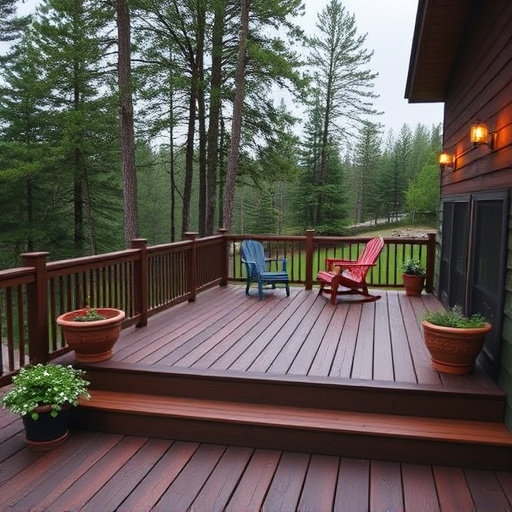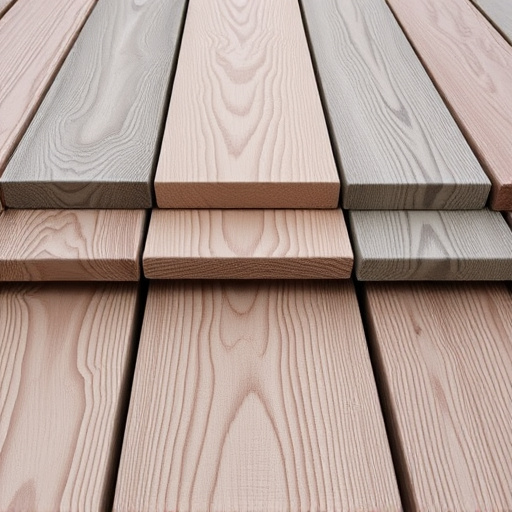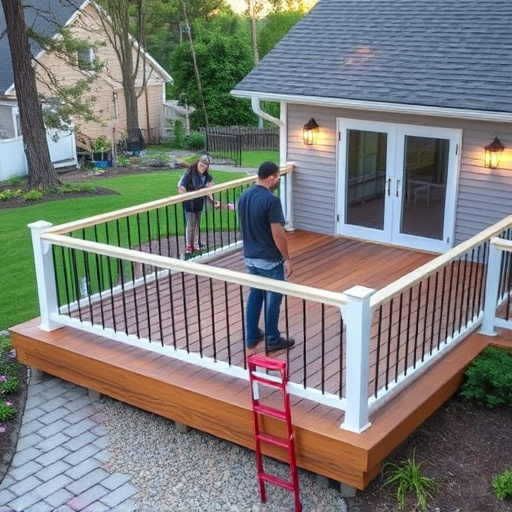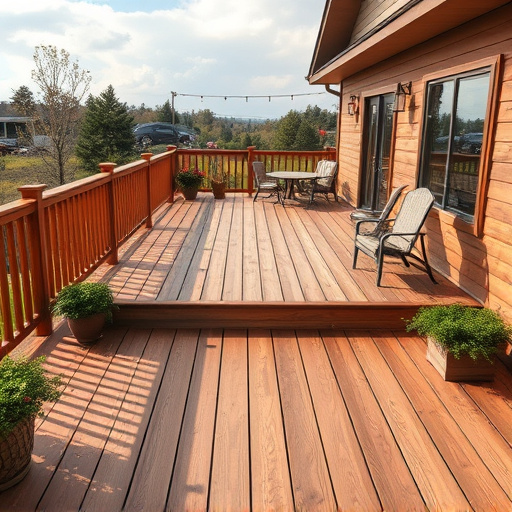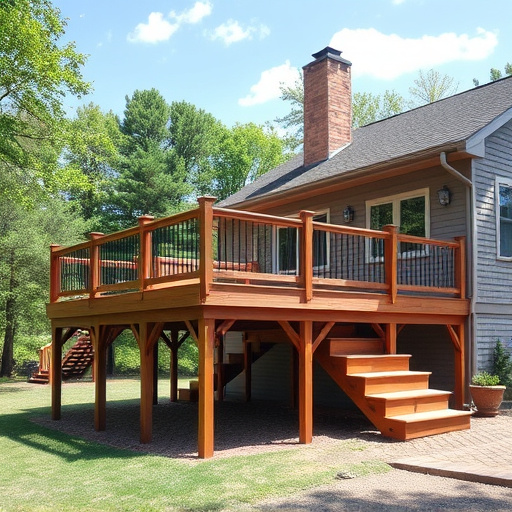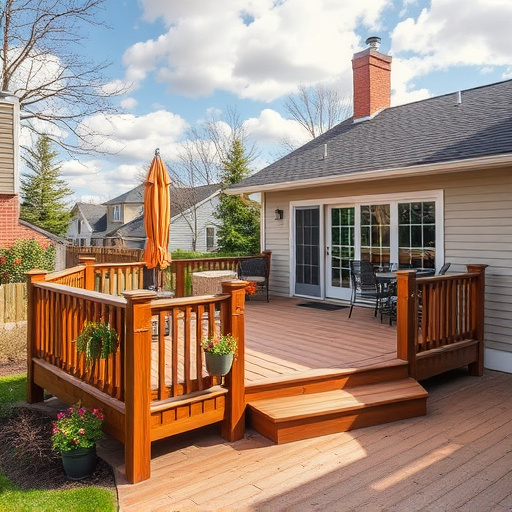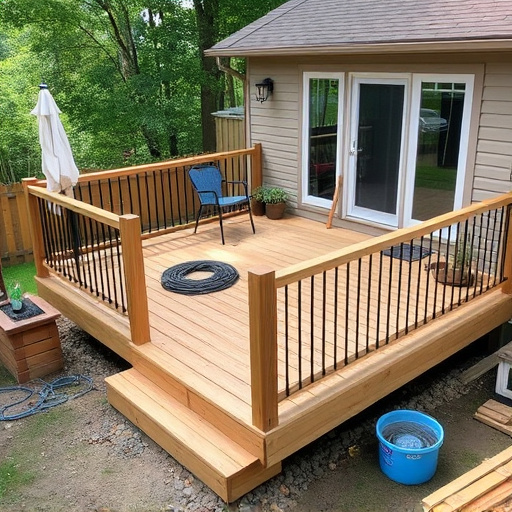Eco-friendly deck systems, incorporating recycled plastics, composite materials, and natural wood with preservatives, offer sustainability, durability, and low maintenance. These systems contribute to environmental preservation through reduced material footprints and water runoff while enhancing outdoor aesthetics and functionality for residential properties. Meticulous planning, correct installation, and regular maintenance ensure their longevity, making them resilient investments even in harsh climates.
Discover the future of outdoor living with sustainable deck systems crafted from eco-friendly materials. In this comprehensive guide, we explore innovative options and their numerous benefits, transforming your space while minimizing environmental impact. From understanding material choices like bamboo and recycled plastics to designing aesthetically pleasing structures that blend seamlessly with nature, we cover it all. Learn about installation techniques that promote longevity and reduced waste, ensuring your deck is not just beautiful but also kind to the planet.
- Understanding Eco-Friendly Deck Materials: Options and Benefits
- Designing Sustainable Decks: Innovation and Aesthetics
- Installation and Maintenance: Ensuring Longevity and Reduced Environmental Impact
Understanding Eco-Friendly Deck Materials: Options and Benefits
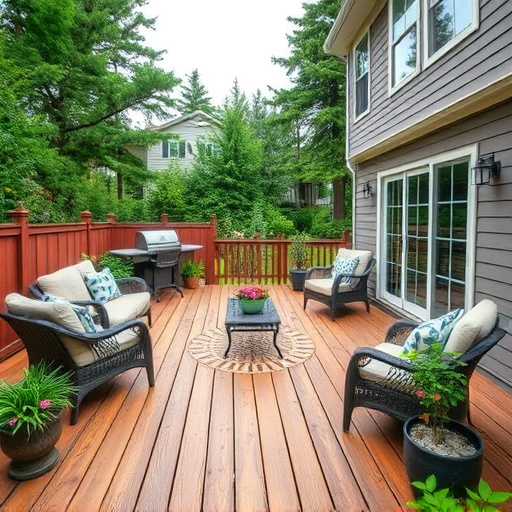
Eco-friendly deck materials are gaining popularity as consumers become more conscious of their environmental impact. These materials offer a sustainable alternative to traditional decking options, allowing for beautiful outdoor spaces without compromising on performance or aesthetics. When considering eco-friendly deck systems, several options stand out, each with its unique benefits.
One popular choice is using recycled plastic and composite materials, which are durable and low-maintenance. These materials often come from reclaimed sources, reducing the demand for new resources. Another option is natural wood, preferably treated with non-toxic preservatives, ensuring longer lifespans and minimizing the need for frequent deck repairs, including roofing and siding replacements. Additionally, incorporating plant-based resins and fibers creates versatile decking solutions that can mimic the look of traditional materials while offering enhanced weather resistance. These options not only contribute to a greener environment but also provide long-term cost savings, as they require less frequent replacement and maintenance compared to conventional decking systems.
Designing Sustainable Decks: Innovation and Aesthetics
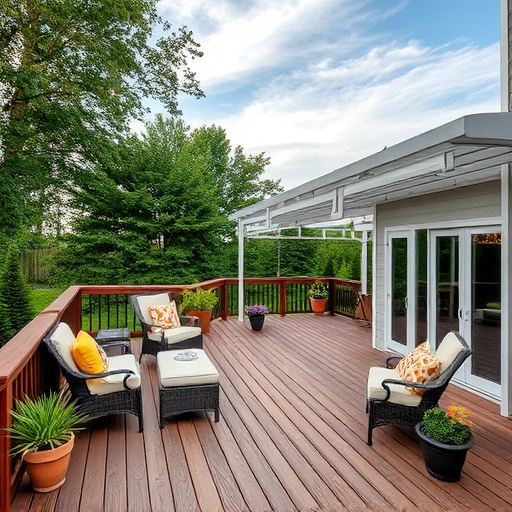
Designing sustainable decks involves a harmonious blend of innovation and aesthetics. Today’s eco-conscious builders and homeowners are looking for deck systems that not only enhance outdoor living spaces but also minimize environmental impact. This shift has led to breakthroughs in materials science, with manufacturers developing high-performance, low-maintenance deck boards made from recycled plastics, wood fibers, or even bamboo. These innovative solutions offer durability, longevity, and reduced carbon footprint, making them attractive alternatives to traditional decking materials.
The integration of sustainable design principles goes beyond the choice of material. Architects and designers are also focusing on creating spaces that seamlessly blend with their surroundings, promoting biodiversity and minimizing water usage. For instance, using permeable decking can help reduce stormwater runoff, while incorporating native plants beneath the deck creates habitats for local wildlife. By combining these eco-friendly features with visually appealing designs, sustainable decks not only serve as functional outdoor retreats but also become beautiful additions to any residential property, complementing other green initiatives like roof repair, roofing, and residential siding.
Installation and Maintenance: Ensuring Longevity and Reduced Environmental Impact
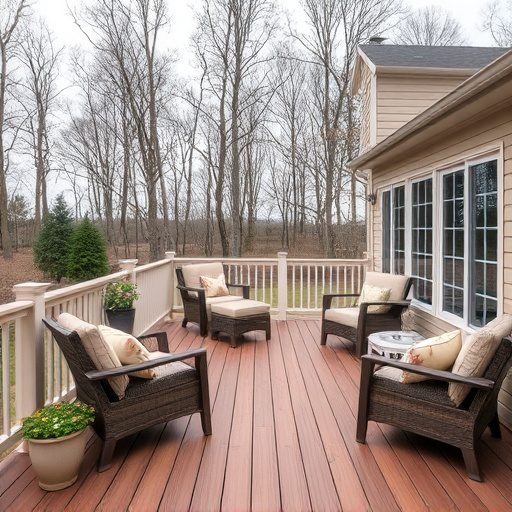
The installation process for sustainable deck systems requires careful consideration to ensure their longevity and minimize environmental impact. When properly installed, these eco-friendly decks can withstand harsh weather conditions and last for years, reducing the need for frequent replacements. Professionals in home exterior services often recommend regular maintenance checks, which include cleaning, inspecting for damage, and re-sealing or refinishing as needed. This routine care not only prolongs the deck’s life but also preserves its aesthetic appeal.
By opting for sustainable materials and implementing proper installation and maintenance practices, homeowners can significantly reduce the environmental footprint of their outdoor spaces. Moreover, these decks contribute to a greener home overall, aligning with the growing demand for environmentally conscious siding services. Even in areas prone to storm damage, well-maintained sustainable decks have shown resilience, ensuring that investment in eco-friendly solutions pays off both aesthetically and ecologically.
Sustainable deck systems, crafted from eco-friendly materials, offer a compelling blend of environmental responsibility and aesthetic appeal. By exploring the diverse options available, embracing innovative design principles, and implementing proper installation and maintenance practices, homeowners can enjoy beautiful outdoor spaces while minimizing their ecological footprint. Incorporating these green deck solutions not only contributes to a healthier planet but also enhances the overall value and durability of your property.








